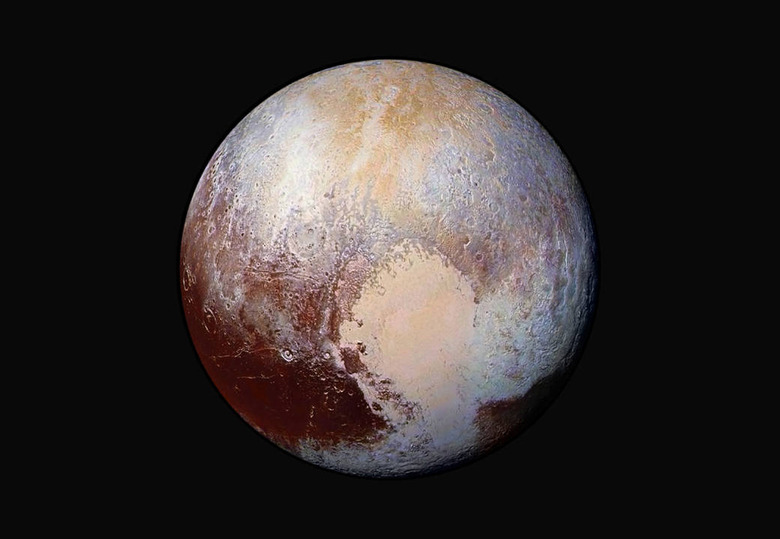'Hot Start' Theory Says Pluto Once Had A Surface Ocean
- New research suggests Pluto once had an ocean on its surface.
- Evidence for the theory comes from NASA's New Horizons spacecraft which spotted unique cracks on the dwarf planet's surface.
- Pluto may even still host a subsurface ocean, but researchers don't know for sure.
Pluto — the once-and-possibly-future planet — is a chilly place. It orbits the Sun at an incredible distance and, as such, it's absolutely freezing cold on its surface. In fact, "freezing" is putting it mildly, as the planet's surface is thought to be as cold as -400 degrees Fahrenheit in some places. With temperatures like that, you'd never imagine the planet being able to host liquid water on its surface, but new research suggests that things were much different long ago.
The study, published in Nature Geoscience, uses observations from NASA's New Horizons spacecraft to paint a picture of young Pluto as a much warmer place. In fact, the researchers say the planet was once so warm that it had a liquid water ocean on its surface.
The researchers reached their stunning conclusions based on the fact that Pluto's icy surface is dotted with massive cracks that may be evidence of an ancient subsurface ocean that was once warm enough to cover the surface itself.
"If it started cold and the ice melted internally, Pluto would have contracted and we should see compression features on its surface, whereas if it started hot it should have expanded as the ocean froze and we should see extension features on the surface," Carver Bierson, first author of the work, said in a statement. "We see lots of evidence of expansion, but we don't see any evidence of compression, so the observations are more consistent with Pluto starting with a liquid ocean."
Even frosty bodies like some moons of Saturn and Jupiter have liquid water beneath a thick crust of ice. Because Pluto is so far away from the Sun, scientists have long debated whether it had a hot or cold start. This new research attempts to clear things up a bit by matching existing surface features of the planet with the "hot start" theory.
"Even in this cold environment so far from the sun, all these worlds might have formed fast and hot, with liquid oceans," Bierson notes.
For moons like Enceladus, which still spew water out into space from between massive fissures in the crust, maintain a liquid ocean thanks to the physical forces of their host planets, with gravity exerting forces on the deeply-buried water and ensuring it stays in a liquid state. The same may still be true of Pluto. The planet doesn't fire water off into space, but it's large enough that it could have held on to liquid water deep beneath its surface.
